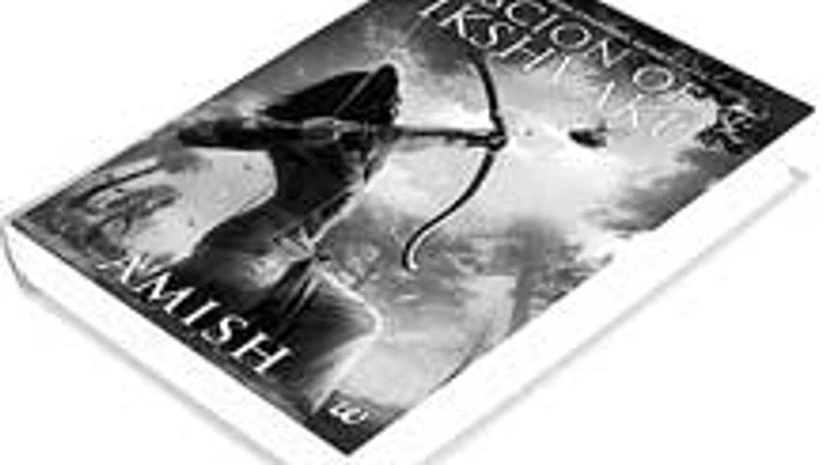SCION OF IKSHVAKU
Ram Chandra Series 1
Author: Amish
Publisher: Westland
Pages: 354
Also Read
Retelling an epic as timeless as Ramayana with modern-day sensibilities must seem somewhat like a Sumo wrestler trying to walk on eggshells. Especially in the times we live in, where any discussion is seen as dissent and epics and myths are considered gospel. For that alone, the author must get credit, for having dared to do in the present age, what was the common trade of bards of an ancient time.
The Ramayana began its life as an oral tale and is remarkable for its fluidity, which scholars say is the hallmark of all epic poetry. Fluidity implies two things: One, a singer could pick up the story from any point in the narrative and tell it and, two, the story changed every time it was told. Many scholars also believe that the Ramayana was almost always sung in communities of devotees and not among the literati (Robert Antoine: Rama of the Bards).
Amish's first in the Ram Chandra series of books sticks to the tradition. It chooses to start with one of the key dramatic points in the epic: Sita's abduction. But from there, in a deft acrobatic move, it leaps back into Ram's teenage years. And, in the true style of action-thrillers or adventure-fantasies, it builds an exciting point of entry into the all-too-familiar narrative of the Ramayana. It is easy to think of this as 'scene one, act one' of a movie; look at the way Ram is described: "A light breeze played with the few strands of hair that had escaped the practical bun atop his head… He quietly cast aside his white angvastram aside to reveal a battle-scarred, dark-skinned torso." One can almost see the camera zooming in on the hero's rippling muscles and lean frame, but that may just be a cynic's imagination working overtime.
The author tells the story mostly through dialogue. This makes the book a fast read and helps introduce ideas that may have otherwise brought a rioting flock of bhakts to the streets. For example, when Ram suggests that asuras were an alien clan of marauders, Vashishta says that devas and asuras were cousins. While this is a common view, it still brings out the worst in the best of scholars (and followers). But when Ram's guru puts it across as his point of view, the devotees are unlikely to revolt.
However excessive use of dialogue takes away from the storytelling. Interesting concepts are floated but never explored completely, and since the dialogue is being used to prove or disprove a point, it stays as a rather simplistic exposition of profound ideas.
The other problem is the book tries too hard to tie the different strands of the epic into neat explanations. The Ramayana (Valmiki and other versions) did not have a problem with fantasy. Ram and Lakshman did not reel back in surprise when they saw a flying monkey who could speak Sanskrit and Ravana's ten heads and flying chariot never had to be explained. But this book, and many others in the genre of Indian-mythological-historical fiction, tries to fit myth, legend and fantasy within a rational framework. Perhaps this is inevitable. Television changed Ram into a tall, muscular and fair movie star from a blue-skinned comic hero, which in turn had evolved from several older forms of depiction. And, so the book makes Manthara a powerful trading chief, Dashrath, a weak king and so on.
However, in its attempt to provide a back story for every character's decisions, the book takes away the mystery and the layers that made them interesting and memorable. Take the character of Vashishta, for instance. Otherwise known for his foul and short temper in Valmiki's Ramayana, he is portrayed as a great and inspiring teacher. But, in this book, Vashishta sounds more like a management consultant rather than a feisty wise sage. His advice to Ram, for example, goes thus: "I am not suggesting that lying is good. But sometimes, just like a tiny dose of poison can prove medicinal, a small lie can actually help. Your habit of speaking the truth is good. But what is your reason for it?" It seems that Vashishta has been tasked with the dual role of being rajguru as well as the storyteller's voice, which is always a source of conflict.
In some cases, the characters come across as caricatures. Lakshman as a lisping, loyal, but paranoid aide, for instance, fits more into the formula that Disney has for a lovable sidekick, rather than the confused and dutiful brother that he was. The author could have borrowed from the many folk versions of the epic that have made Lakshman a far more interesting man.
Sita is moulded differently too in the book - she is a battle veteran and great leader who is also a believer in women's rights. The swayamvar is more like the culmination of a series of dates between Ram and Sita where she dictates the terms; at one point she even asks him to practice with the bow that he has to string for the swayamvar and win her hand so that he makes no mistake! Another character whose makeover is quite remarkable is Dashrath who is shown to be a weak king who blames Ram for his defeat and his kingdom's decline before turning around into his son's greatest admirer. This definitely adds a dimension to the old king's image, which has for long been tarnished for his obsessive love for a young queen. For that he should be grateful to Scion of Ikshvaku.

)
